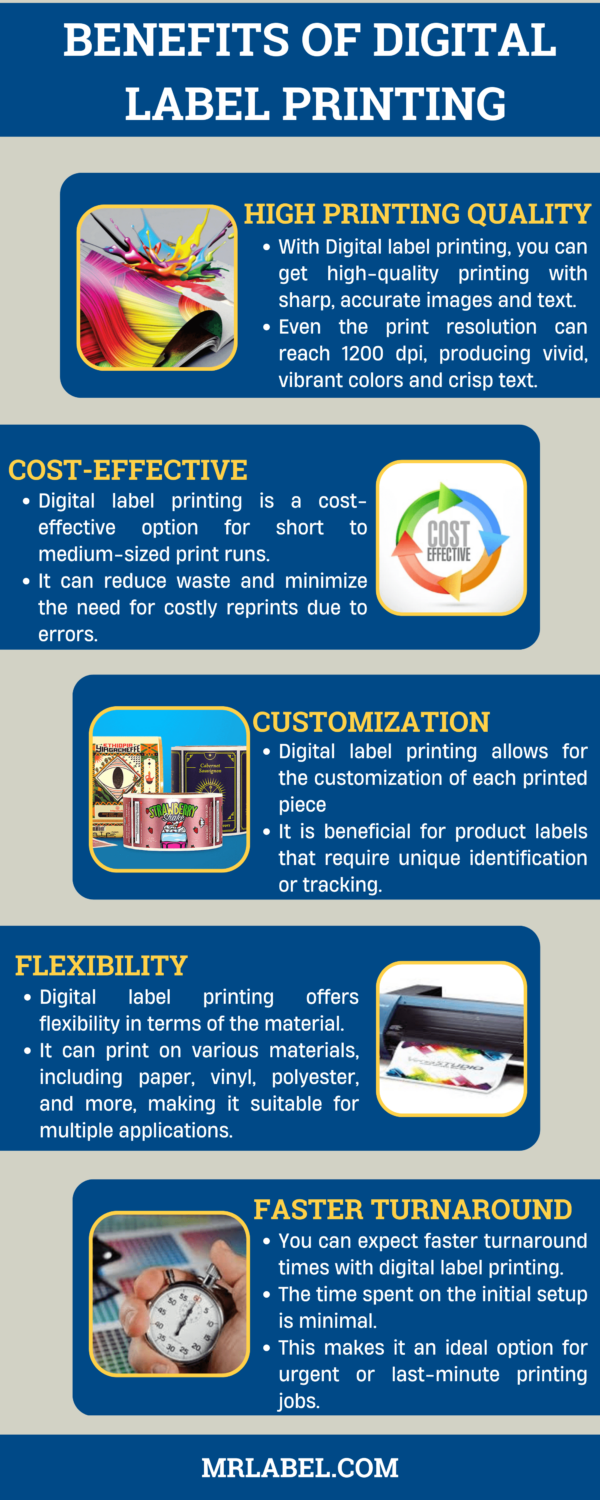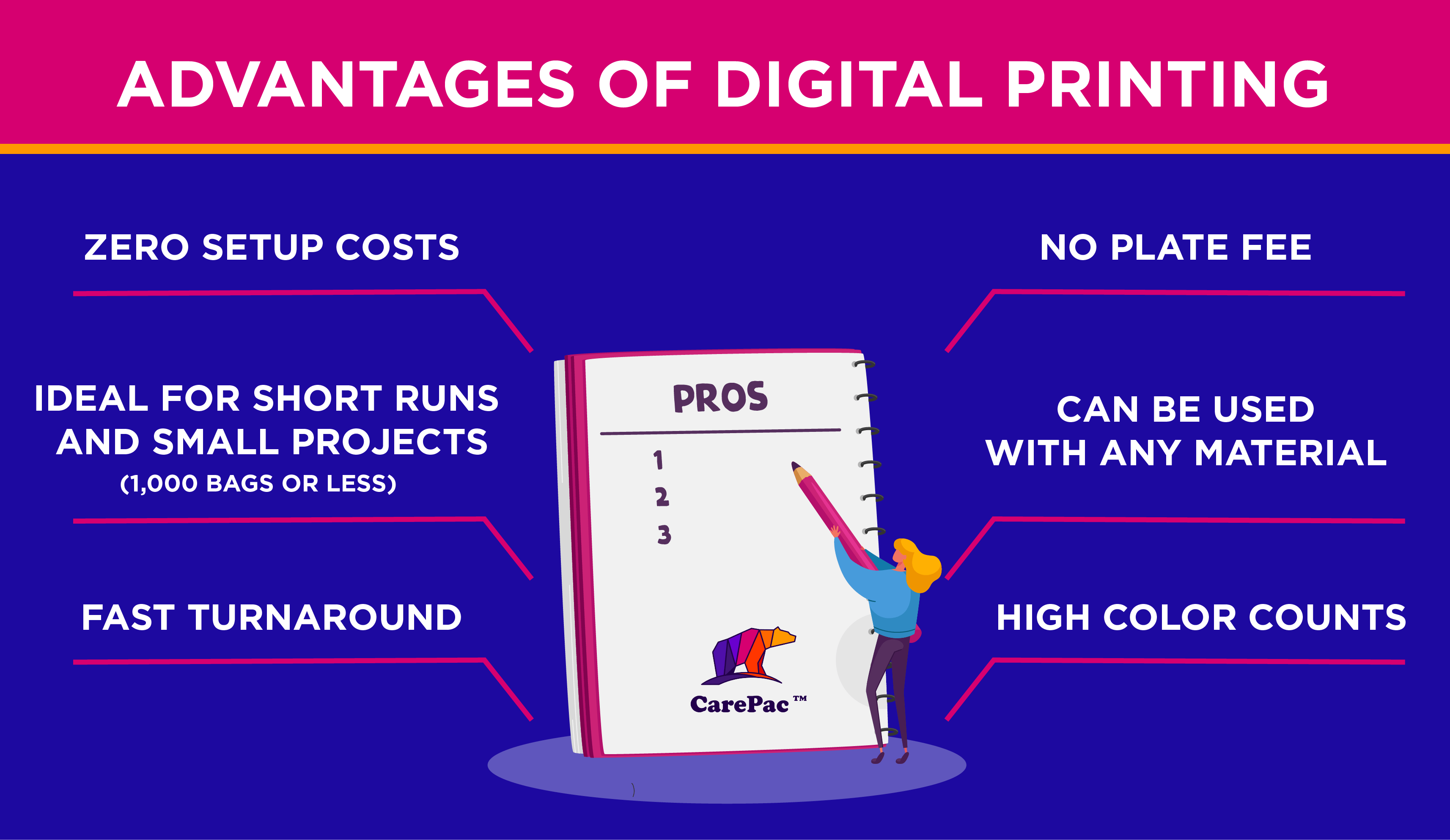Unknown Facts About Digital Printing
Unknown Facts About Digital Printing
Blog Article
Some Ideas on Digital Printing You Should Know
Table of ContentsThe 8-Second Trick For Digital PrintingDigital Printing Can Be Fun For EveryoneThe smart Trick of Digital Printing That Nobody is Talking AboutThe 7-Second Trick For Digital PrintingThe smart Trick of Digital Printing That Nobody is Talking AboutNot known Facts About Digital Printing
Variable data printing, such as straight mail with customized codes and addresses, is ideally fit for digital printing. Digital fast printing only requires four actions of layout, review, printing and binding to get every little thing done. Digital quick printing has an exceptional benefit: print on need.According to PMMI, digital printing allows brands and makers to respond rapidly to client needs while enhancing the supply chain, minimizing warehousing price and waste, and delighting in faster time to market. That all sounds wonderful, however just how does this technology do all that? The major differentiator of these innovations is that there are no set up fees and no plates with digital printing.
Digital Printing Can Be Fun For Everyone
According to Wikipedia, the best difference between digital printing and traditional approaches such as lithography, flexography, gravure, or letterpress - Digital Printing is that there is no requirement to replace printing plates in digital printing, whereas in these analog printing methods home plates are repetitively replaced. This results in quicker turnaround time and lowers price when using electronic printing.
Fast manufacturing indicates getting your item to market much faster. It also means it's much easier and faster to make adjustments later on, when you alter a recipe, include a SKU, or produce seasonal packaging. Digital printing is very versatile, so it's easy to make modifications to the bundle style swiftly. It all goes back to the plates.
With standard printing approaches, short-run printing is just not possible. Because a fantastic design can make or break your product, digital printing constantly produces high-quality, clear and colorful graphics each time.
Digital printing is the process of printing digital-based images directly onto a variety of media substrates. There is no requirement for a printing plate, unlike with countered printing. Digital files such as PDFs or desktop publishing documents can be sent straight to the electronic printing press to print theoretically, picture paper, canvas, textile, synthetics, cardstock and other substratums.
Digital Printing - Truths
According to PMMI, digital printing enables brands and producers to react quickly to client needs while boosting the supply chain, reducing warehousing expense and waste, and appreciating faster time to market. That all noises great, but how does this modern technology do all that? The significant differentiator of these innovations is that there are no set up costs and no plates with digital printing.
According to Wikipedia, the best distinction between digital printing and conventional approaches such as lithography, flexography, gravure, or letterpress is that there is no requirement to change printing plates in electronic printing, whereas in these analog printing methods the have a peek at this website plates are repeatedly changed. This leads to quicker turnaround time and decreases expense when utilizing digital printing.

7 Simple Techniques For Digital Printing
With traditional printing techniques, short-run printing is simply not feasible. Due to the fact that a great layout can make or damage your product, electronic printing regularly creates high-quality, clear and colorful graphics each time.

According to PMMI, electronic printing allows brand names and makers to respond promptly to client needs while enhancing the supply chain, decreasing warehousing cost and waste, and enjoying faster time to market. That all noises great, yet how does this modern technology do all that? The significant differentiator of these technologies is that there are no set up fees and no plates with electronic printing.
Excitement About Digital Printing
This results in quicker turnaround time and lowers cost when making use of electronic printing.
Rapid manufacturing suggests getting your item to market faster. It additionally implies it's much easier and faster to make adjustments later on, when you transform a recipe, include a SKU, or produce seasonal packaging. Digital printing is very flexible, so it's simple to make modifications to the plan style swiftly. All of it goes back to home plates.

Not known Factual Statements About Digital Printing
Digital printing is the procedure of printing digital-based images straight onto a range of media substrates. There is no demand for a printing plate, unlike with balanced out printing. Digital data such as useful site PDFs or desktop computer publishing data can be sent out directly to the electronic printing press to print on paper, image paper, canvas, fabric, synthetics, cardstock and various other substrates.
Report this page